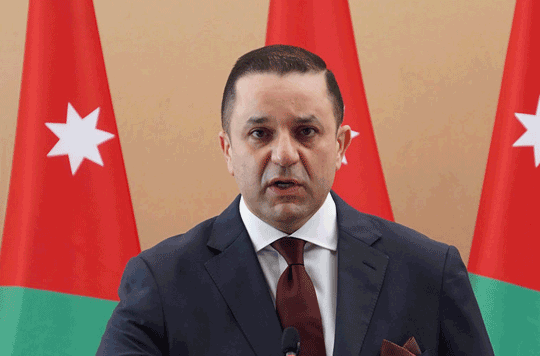You are here
Jordan’s real GDP expected to grow 2.1% in 2022 — WB
By Batool Ghaith - Apr 15,2022 - Last updated at Apr 15,2022

Jordan’s real GDP is expected to grow 2.1 per cent in 2022, and 2.3 in 2023 and 2024, from 2.0 per cent in 2021, according to the World Bank (Photo by Amjad Ghsoun)
AMMAN — Jordan’s real GDP is expected to grow 2.1 per cent in 2022, and 2.3 in 2023 and 2024, from 2 per cent in 2021, according to the World Bank’s latest economic update forecast titled “Reality Check: Forecasting Growth in the Middle East and North Africa in Times of Uncertainty”.
Jordan’s real GDP per capita is expected to grow from 1.4 per cent in 2021, to 1.8 per cent in 2022 and 2.2 per cent in 2023, while the inflation rate is expected to almost triple from 1.3 per cent in 2021 to 3.3 per cent in 2022, the report forecast.
GDP growth is led by a recovery in domestic demand and supportive government policies, the report said.
On the supply side, acceleration in the recovery of tourism and services are expected to boost the economy. Growth dynamics over the medium-term, however, hinge on global economic conditions, headwinds from the war in Ukraine and associated sanctions and timely implementation of key reforms to address structural challenges, according to the report.
Jordan’s current account deficit (CAD) remains elevated. The CAD widened by the end of September 2021 to 12.1 per cent of GDP, driven by a substantial increase in the merchandise trade deficit amid unprecedented increases in global commodity prices and modest recovery in travel receipts compared to pre-COVID 19 levels, according to the report.
Jordan’s current account balance -10.6 per cent of GDP in 2021 is going up to -9.1 in 2022, the report said.
“Employment indicators still raise concern for households’ welfare. Deterioration in the labour market remains the most significant threat to household welfare,” the report stated.
The employment rate in Jordan remained low, at 26.4 per cent (Q3-2021). Although unemployment fell slightly since peaking at 25 per cent in Q1-2021, it was still high at 23.2 per cent in Q3-2021, even more so for women (30.8 per cent) and young people (48.5 per cent among those aged 15 to 24 years old).
The national poverty rate before the pandemic was 15.7 per cent (2018). Declines in employment incomes at the height of the crisis were estimated to increase poverty by as much as 11 percentage points, the report said.
As a developing oil importer, Jordan’s CG fiscal deficit (including grants) is projected to improve to 4.0 per cent of GDP in 2022, supported by robust revenue efforts and retraction of COVID-19 related expenditures, the report showed.
Over the medium term, the fiscal deficit is projected to improve supported by IMF-EFF fiscal measures. Subsequently, government and guaranteed gross debt at end-2022 is projected to reach 114.2 per cent of GDP (with debt net of Social Security Investment Fund holdings at around 90.4 per cent) before gradually declining over the medium-term, according to the report.
“Over the medium-term, full tourism recovery, pick-up in remittances, growth in exports and slow-down in imports is projected to narrow Jordan’s CAD. Household welfare is expected to slightly improve with the expected slow recovery in tourism, domestic demand and interaction-intensive services sectors. However, short of a revival of growth beyond the low 2 per cent — which in turn is contingent on reform implementation — welfare improvements are not expected to be significant and could be reversed through shocks given limited household buffers. Larger households, young, female and informal workers may take longer to recover from the economic impacts of the crisis,” the report stated.
The report stated that MENA countries are mostly net food importers and many are large net fuel exporters. Jordan’s net fuel exports are -7.3 per cent of GDP, while net food exports are -6.7 per cent of GDP.
Greenhouse gas (GHG) emissions growth (mtCO2e) in Jordan is expected to go up from 1.7 per cent in 2021 up to 1.9 per cent in 2022 and going down again to 1.6 in 2023.
According to the report, the pandemic raised public debt levels by around 10 to 15 percentage points across the board in 2020. The war poses additional challenges to debt sustainability. Egypt, Jordan and Tunisia have more than 80 per cent public debt as a share of GDP.
The report showed that many economies in the MENA region are data deprived, lagging in their statistical capacity to generate data. Statistical capacity declined for all the MENA economies in the sample, except for Jordan and Iran.
Economies in the Middle East and North Africa (MENA) region are expected to grow by 5.2 pe rcent in 2022, the fastest rate since 2016, on the back of oil-price windfalls benefitting the region’s oil exporters. But heightened uncertainty surrounds this forecast due to the war in Ukraine and ongoing threats from COVID-19 variants, the report said.
Despite the projected growth rate of 5.2 per cent, GDP per capita, an indicator of people’s living standards, will barely exceed pre-pandemic levels due to a generally lackluster performance in 2020-2021, the report said.
“The harsh reality is that no one is out of the woods yet. The threat of COVID-19 variants remains and the war in Ukraine has multiplied risks, particularly for the poor who bear the brunt of the increase in food and energy prices. A good dose of realism about the region’s growth prospects during these times of uncertainty is essential,” Ferid Belhaj, World Bank Vice President for the MENA region, said in a World Bank statement.
Belhaj emphasised that managing the wave of uncertainty is a key challenge for policymakers.
“The World Bank is committed to working alongside governments across the MENA region during this time of compounding risks,” he added.
Inflationary pressures created by the pandemic have been exacerbated by the Ukraine war. Countries in the MENA region rely heavily on food imports, including wheat from Russia and Ukraine, the World Bank statement said.
The full extent of the consequences of the war are yet to be determined, but early signs point to a heightening of the economic difficulties already besetting MENA economies, particularly oil-importing middle-income countries, the statement added.
Related Articles
AMMAN — Jordan's GDP is projected to grow by 2.7 per cent, as inflation is expected to narrow to 3.8 per cent in 2023, Finance Minister Moha
AMMAN — Jordan has maintained its ‘BB-’ Long-Term Foreign-Currency Issuer Default Rating (IDR) with a stable outlook, according to Fitch Rat
AMMAN — Jordan’s economy grew by 2.5 per cent in the first quarter of 2022, compared to the same period in 2021, the Jordan News Agency, Pet

















